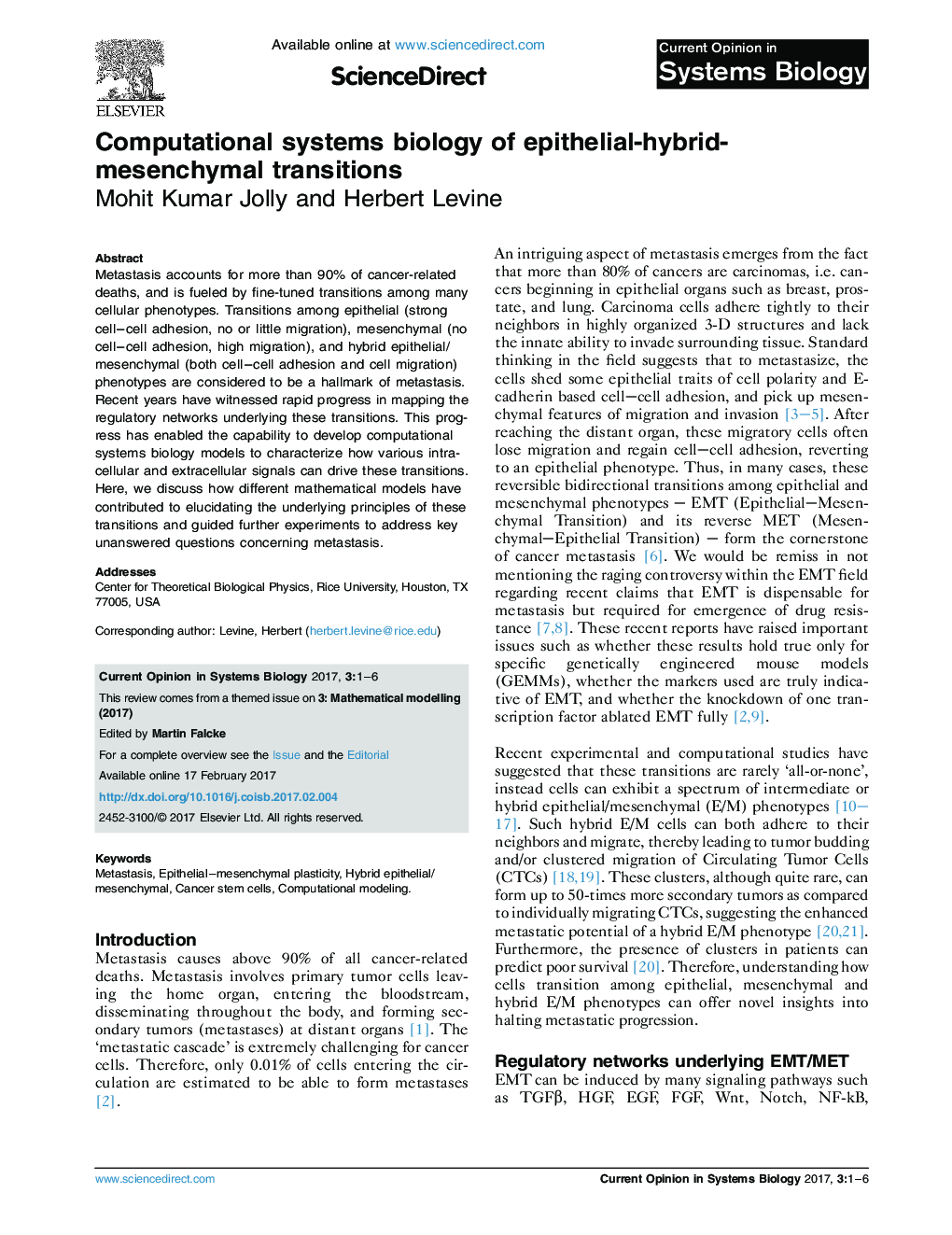| Article ID | Journal | Published Year | Pages | File Type |
|---|---|---|---|---|
| 8918147 | Current Opinion in Systems Biology | 2017 | 6 Pages |
Abstract
Metastasis accounts for more than 90% of cancer-related deaths, and is fueled by fine-tuned transitions among many cellular phenotypes. Transitions among epithelial (strong cell-cell adhesion, no or little migration), mesenchymal (no cell-cell adhesion, high migration), and hybrid epithelial/mesenchymal (both cell-cell adhesion and cell migration) phenotypes are considered to be a hallmark of metastasis. Recent years have witnessed rapid progress in mapping the regulatory networks underlying these transitions. This progress has enabled the capability to develop computational systems biology models to characterize how various intracellular and extracellular signals can drive these transitions. Here, we discuss how different mathematical models have contributed to elucidating the underlying principles of these transitions and guided further experiments to address key unanswered questions concerning metastasis.
Related Topics
Physical Sciences and Engineering
Computer Science
Computer Science (General)
Authors
Mohit Kumar Jolly, Herbert Levine,
